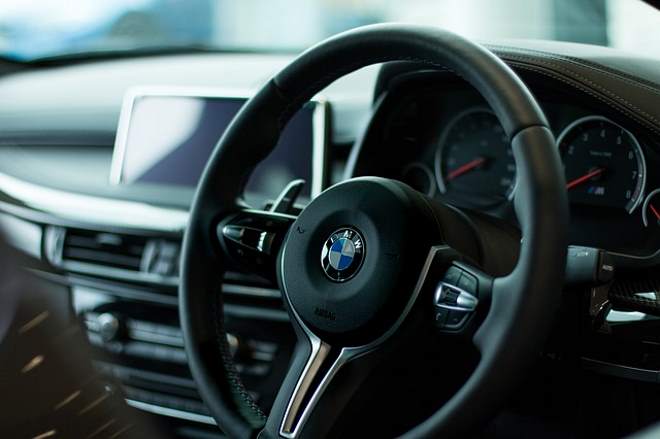Luxury SUV Buying Guide: Find Smart Deals on Premium SUVs
Explore the evolving luxury SUV market with practical tips to score the best deals on premium crossovers and full-size models. This guide covers must-have features, popular models and pricing, optimal purchase timing, and ownership costs so you can shop confidently and save on high-end SUVs.

Key Features to Prioritize in Luxury SUVs
When evaluating luxury SUVs, concentrate on attributes that meaningfully improve comfort, convenience, and driving dynamics. Upscale cabins typically use premium leathers, soft-touch materials, and meticulous fit-and-finish. Infotainment packages now include large, high-resolution screens, wireless smartphone integration, and advanced voice controls. Driver assistance and safety suites—adaptive cruise control, lane-centering, automatic emergency braking, and parking aids—are increasingly sophisticated in this segment.
Look for extras that elevate the daily experience: customizable ambient lighting, multi-zone climate control with air purification, high-end surround audio systems, and configurable drive modes that adjust throttle mapping, steering feel, and suspension settings. Power-operated and heated/cooled seating with memory functions, a head-up display (HUD), and remote or automated parking features are common in higher trims and can make a material difference in satisfaction and resale value.
Notable Models and Price Brackets
Luxury SUVs span a broad price spectrum, from attainable entry-level offerings to flagship models that push past six figures. Expect entry-level luxury crossovers to begin in the mid-$40,000s, while full-size, feature-rich models often command $80,000 or more. Below is a concise snapshot of representative models and their starting prices.
| Vehicle Model | Starting MSRP | Key Luxury Features |
|---|---|---|
| Hyundai Palisade Calligraphy | $48,900 | Nappa leather, Head-up display, Premium audio |
| Genesis GV80 | $55,550 | 3D digital instrument cluster, Remote Smart Parking |
| BMW X7 | $77,850 | Air suspension, Panoramic Sky Lounge roof |
| Mercedes GLS | $81,800 | E-Active Body Control, Executive rear seats |
Prices, rates, or cost estimates mentioned in this article are based on the latest available information but may change over time. Independent research is advised before making financial decisions.
Ways to Maximize Value When Shopping
There are multiple strategies buyers can use to stretch their budget without compromising on luxury. Start by comparing lease versus purchase scenarios—leases often lower monthly payments for those who prefer driving newer models with warranty coverage. Certified pre-owned (CPO) vehicles from luxury brands can offer nearly-new equipment, extended warranties, and lower initial depreciation.
Negotiate across several dealerships and use competing offers to extract better pricing, incentives, or added service packages. Look for manufacturer incentives such as low-interest financing, cash rebates, or loyalty bonuses. Consider a slightly lower trim or an outgoing model year to secure discounts while still getting many coveted features. Factoring in trade-in value, dealer fees, and optional add-ons will help you evaluate total cost rather than focusing solely on the sticker price.
Best Times to Buy a Luxury SUV
Timing your purchase can produce meaningful savings. End-of-year clearance events are well known for deep discounts as dealers make room for new inventory. Model-year changeovers—when incoming versions arrive—create opportunities to buy remaining stock of the prior year at reduced prices. Quarterly or month-end sales targets may also motivate sales teams to offer better deals.
Holiday promotions and manufacturer incentive windows (often aligned with finance company schedules) can lower out-of-pocket costs or provide attractive lease terms. If you aren’t in a hurry, monitor inventory and incentives for several weeks; patience often pays off in this market.
Ownership Costs and Long-Term Value
Owning a luxury SUV goes beyond purchase price. Routine maintenance, specialized service, premium fuel, and replacement parts can raise ongoing expenses. Insurance premiums and tire replacement costs also tend to be higher for luxury vehicles. That said, many premium brands offset ownership burden by offering complimentary maintenance plans, extended service warranties, or roadside assistance packages for the first few years.
Depreciation is a significant factor—higher initial prices mean larger nominal drops in value, but some prestige models hold value better than others. Consider resale and certified pre-owned demand when deciding on trim level and optional equipment; widely desired features like all-wheel drive, advanced safety tech, and leather interiors can support stronger resale prices.
Final Considerations
The luxury SUV landscape offers a wide array of choices for buyers seeking comfort, technology, and performance. By focusing on the features that matter most to you, comparing financing and ownership options, and timing your purchase wisely, you can secure a premium vehicle that aligns with your needs and budget. Don’t overlook long-term costs and warranty coverage as part of your evaluation—these elements often determine the real value of a luxury SUV over time. With research and a strategic approach, shoppers can find compelling deals on high-end SUVs without sacrificing the hallmark refinements that define the segment.





